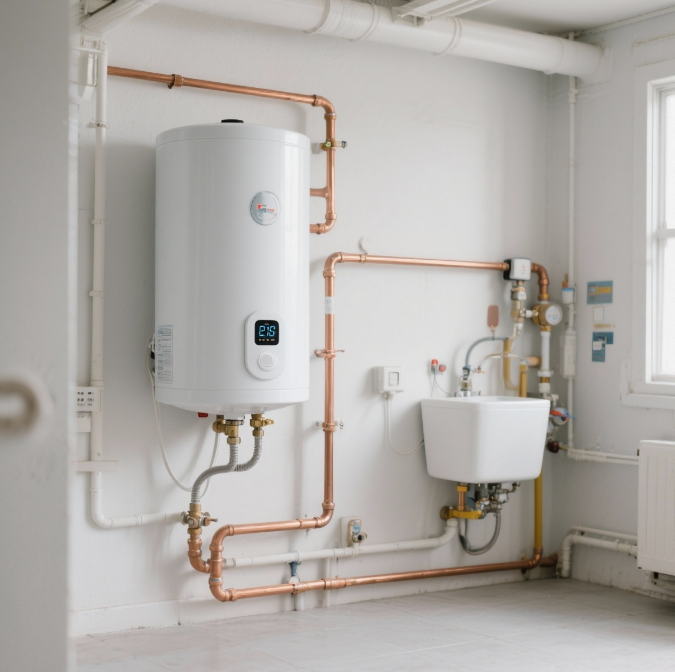
Hot water in your kitchen often feels like a small miracle. One moment, the tap dribbles cold water; the next, warmth flows as if it was always meant to be. That smooth transition comes from something most people barely notice — the electric water heater. It doesn’t shout or flash; it quietly keeps your house comfortable, day after day, blending effortlessly with your other kitchen equipment.
An electric water heater is basically a tank filled with water and a pair of metal heating elements. Electricity powers those elements, warming the water to the temperature you choose. A thermostat keeps an eye on the heat and switches the elements on or off to maintain it. Surrounding the tank, insulation traps warmth, cutting down wasted energy and keeping things efficient without any fuss.
Size matters too. Tiny apartments often manage with a 20-gallon tank, while larger homes may need 80 gallons or more. Picking the right size ensures your kitchen equipment and faucets never run short on hot water, even when everyone wants a warm shower at the same time.
How an Electric Water Heater Works
The mechanism is surprisingly simple if you pay attention. Every time you open a hot water tap, cold water pushes into the tank, forcing warmer water upward. The thermostat detects the dip in temperature and triggers the heating elements.
A closer look at the process shows:
- Heating elements turn electricity into heat quickly.
- The thermostat keeps water at a steady temperature.
- Insulation traps warmth so energy doesn’t leak away.
Hot water naturally rises to the top of the tank, giving you hot water immediately from the tap. Cooler water stays at the bottom, ready to be heated again. That cycle keeps your kitchen, bathroom, and laundry flowing with warm water whenever you need it.
Daily Use and Efficiency Tips
Electric heaters run quietly, but they still need attention. Back-to-back showers can drain the tank, and it takes time to refill. Setting the thermostat to around 120°F balances comfort and safety.
Some habits prolong life and save energy:
- Drain the tank once a year to remove mineral buildup.
- Inspect heating elements if water cools faster than expected.
- Test the safety valve to prevent pressure problems.
A little maintenance keeps your heater reliable for years.
Electric vs. Gas Water Heaters
Both heat water, but the methods differ. Gas units burn fuel and require ventilation; electric ones rely solely on electricity. That makes electric heaters quieter, cleaner, and easier to install.
The downside is speed. Electric tanks take longer to refill after heavy use, but for most households, the convenience outweighs the wait. No venting, no flames — just hot water when you need it.
Living With an Electric Water Heater
Once you see how these heaters work, their quiet reliability becomes obvious. They heat, refill, and maintain water without demanding much attention. Treat them with simple care, and they’ll reward you with years of consistent performance.